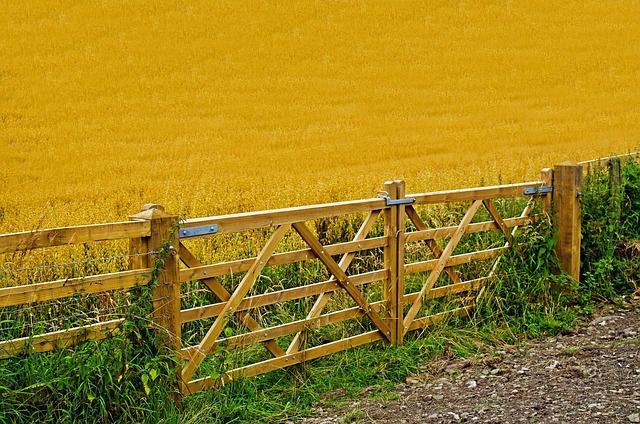In coastal regions, where harsh weather conditions and salty air pose unique challenges, durable wooden fencing is an attractive and sustainable solution. This article explores the intricacies of selecting and maintaining long-lasting fences that can withstand the rigors of a maritime climate. We delve into understanding coastal weather patterns, highlighting the benefits of specific wood species, offering installation guidance for optimal performance in salty environments, and providing essential maintenance strategies to ensure these fences remain robust and aesthetically pleasing over time.
- Understanding Coastal Weather Challenges for Fencing
- Benefits of Durable Wooden Fencing Materials
- Choosing the Right Wood Species for Coastlines
- Installation Tips for Longevity in Salty Environments
- Maintenance Strategies to Preserve Coastal Fences
Understanding Coastal Weather Challenges for Fencing
Coastal areas face unique weather challenges that can significantly impact fencing structures. The constant exposure to salt water, strong winds, and extreme temperatures requires special consideration when choosing materials for durable fencing. Traditional wooden fences might not withstand these harsh conditions, leading to frequent repairs or replacements.
Understanding these challenges is key to selecting the right fencing option. For instance, treated wooden fences with a high resistance to rot and corrosion can be an excellent choice. These materials are designed to endure the coastal climate, ensuring longer lifespans and reduced maintenance needs. Additionally, specific fence designs that allow for flexibility and movement can prevent damage caused by strong winds and storms.
Benefits of Durable Wooden Fencing Materials
Durable wooden fencing materials offer numerous advantages for coastal areas, where traditional barriers often face unique challenges. One of the key benefits is their ability to withstand harsh weather conditions, including high winds and salt mist, which can quickly deteriorate standard fencing. These specialized woods are treated to be rot-resistant, ensuring they maintain their structural integrity over extended periods. This longevity not only reduces replacement costs but also minimizes environmental impact by decreasing waste from frequent repairs or full substitutions.
Moreover, wooden fences provide an aesthetically pleasing alternative to more industrial options commonly seen along coastlines. Their natural beauty can enhance the overall look of coastal properties while offering privacy and security. The versatility in wood species and styling allows for customization to match architectural designs, ensuring these fences blend seamlessly with surrounding landscapes.
Choosing the Right Wood Species for Coastlines
When selecting wood for coastal fencing, understanding the unique challenges of the environment is key. Saltwater, strong winds, and varying climates can take a toll on any material. The right choice should be naturally resistant to rot, decay, and moisture absorption. Certain wood species excel in these conditions, offering both durability and aesthetic appeal.
For instance, treated cedar is a popular option due to its inherent resistance to insects and water. It’s not only long-lasting but also retains its beauty over time. Other choices include tropical hardwoods like ipe or cumaru, which are extremely dense and resistant to rot and moisture. These options provide robust, low-maintenance fencing that can withstand the coastal environment for years.
Installation Tips for Longevity in Salty Environments
When installing wooden fencing in coastal areas, special considerations are required to ensure longevity due to the salty environment. First and foremost, choose a durable wood species like cedar or redwood known for its natural resistance to rot and insects. These woods have higher oil and resin content, making them less susceptible to moisture damage.
During installation, ensure proper drainage by creating a slight slope away from structures. Use high-quality fasteners and seals designed for outdoor use in salty environments. All joints should be sealed with water-resistant silicone caulk to prevent water intrusion. Additionally, consider pre-treating the wood with a marine-grade preservative to further enhance its resistance against salt spray and moisture.
Maintenance Strategies to Preserve Coastal Fences
Maintaining durable wooden fencing in coastal areas requires a strategic approach due to the constant exposure to salt air, high humidity, and potential wind-driven debris. Regular cleaning is essential; hosing down the fence to remove salt deposits and organic matter will prevent rot and insect infestation. A water-based preservative can be applied annually to protect the wood from moisture absorption, ensuring its longevity.
Additionally, inspecting the fence for any signs of damage or weakness is vital. Promptly repairing or replacing damaged sections prevents further deterioration. Using a suitable sealant on exposed joints and nail heads can also deter water ingress and pest intrusion. These simple yet effective maintenance strategies will help preserve coastal wooden fences, ensuring they withstand the harsh marine environment.
